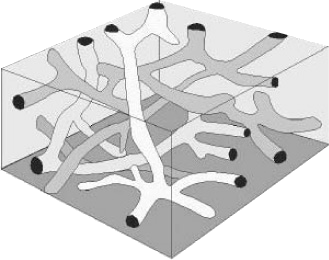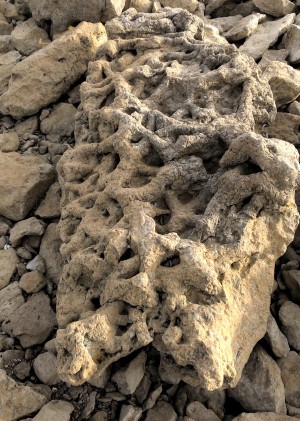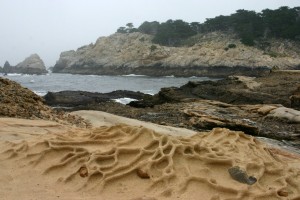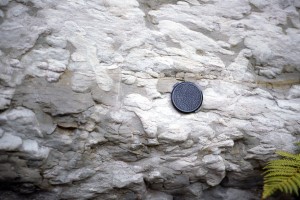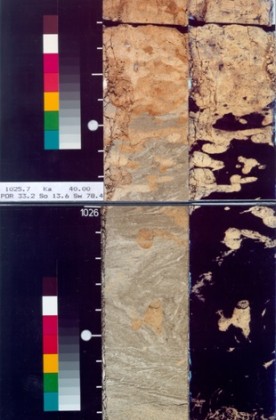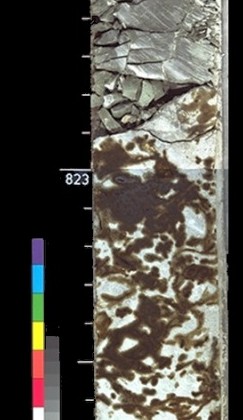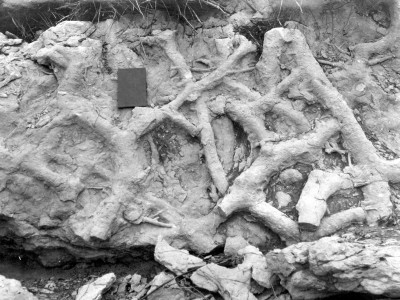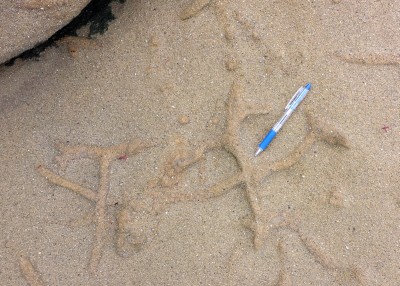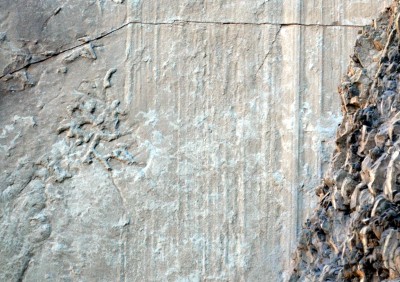Examples of Thalassinoides Trace Fossils
Three Thalassinoides Controversies
|
Left Photo: A U.S. Geological Survey (USGS) photograph taken in 1914 for Professional Paper 150 (1919) that identifies the Thalassinoides burrows above as fossil fucoids (seaweed). The burrows are exposed on the underside of a slab of Fort Worth Limestone in Denison, Oklahoma. Originally described by Woodward (1830) as a fossil fucoid, Thalassinoides was redescribed by Ehrenberg (1944) as an invertbrate burrow. Middle Photo:Interconnected burrows in which some burrow tubes do not have fecal pellers lining the burrow walls, yet others do. Because those burrows without pellets are classified as Thalassinoides, whereas those with pellets are Ophiomorpha, the same organism probably created both burrow types. This example is from a turbidite bed in the Cretaceous Point Loma Formation at Sunset Cliffs in San Diego, California. Right Photo: A small isolated network of Thalassinoides tunnels probably made by a single animal that was rafted from its shallow-water home into a deep-marine setting by a turbidity current, and came to rest next to series of parallel drag casts made by the same current. Most likely the organism died shortly after its arrival due to a scarcity of enough food in the deep-marine setting to sustain it. This example is from turbidites of the Cretaceous Venado Sandstone that crop out at Monticello Dam in the Sacramento Valley of northern California. | ||

